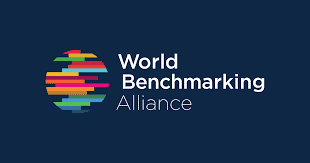This post has also been published on the World Benchmarking Alliance website
Every year, we wait in anticipation for the publication of the Corporate Human Rights Benchmark (CHRB) results. Not because we are waiting to see which companies improved and which remain stagnant. We already know that. As the research providers for CHRB for the past four years, one of our core responsibilities is to analyse companies’ performance in implementing the fundamental principles of human rights and to ensure that companies get the score that they deserve for the information they have available. Some really do excel. But an astonishing number are still failing to achieve even minimum human rights standards. An important challenge for us is to be able to distinguish from genuine progress and progress on paper only. But it is clear to me that our role is to be fair and true to the human rights standards that CHRB embodies, without prejudice.
To put things into context, we are talking about researching 230 companies per year but during a period of 7 months. The methodology has over 60 indicators with significant variability depending on the sector and whether the company has both supply chains and its own operations. This is combined with the classification, selection and analysing of allegations. Indicators are then broken down into hundreds of smaller requirements in order to make the research fairer, consistent and more transparent to help companies understand the level of evidence we want to see.
One of the things we notice and celebrate every year is the continuous evolution in companies’ approaches towards human rights. It is very pleasing to see how companies have strengthened their policies, are more specific and detailed about their grievance mechanism or how their due diligence is carried out or how they have improved the evidence provided in cases where they failed to meet the requirements in the past. But with the improvements also come the challenges of constantly revising available evidence that is continuously evolving, and can take the form of new policies, new disclosures, or even completely new websites. To a certain extent, I think that it is fair to say that we researchers suffer from some level of ‘FOMO’. Not the social anxiety fear of missing out but the fear of missing out crucial information or the fear of accepting what corporates say at face-value without exercising some critical thinking. This fear does not go away when the results are published but more importantly, it starts all over again as we start collecting information for the next year’s results. It is a never-ending process, but this ‘fear’ helps us to push the bar of excellence and address our shortcomings in dealing with a very sophisticated methodology and creates opportunities for meaningful conversation with companies and stakeholders.
We have developed a rigorous process for checking and validating information. This includes rotating companies among researchers and consistency checking sectors for learning and adaptation. We have a team of 12 researchers working across Asia, Europe and Latin America spending from hours to days analysing each company. Undoubtedly, companies have got better at engaging with human rights issues and are able to communicate what they are doing more effectively. Many have teams of experts carefully drafting every single word that goes into the report. But our job as researchers is to be just and constantly think about the stakeholders at the core of the Benchmark – people and communities – and to translate these different reports into a common language that serves them.
Words matter – and we are specific about words that we accept because of their intrinsic meaning and the message they can portray – but actions speak louder and CHRB has been crucial in making companies act by providing information that drives better decision making. Decisions which ultimately have an impact on people’s lives around the world.

